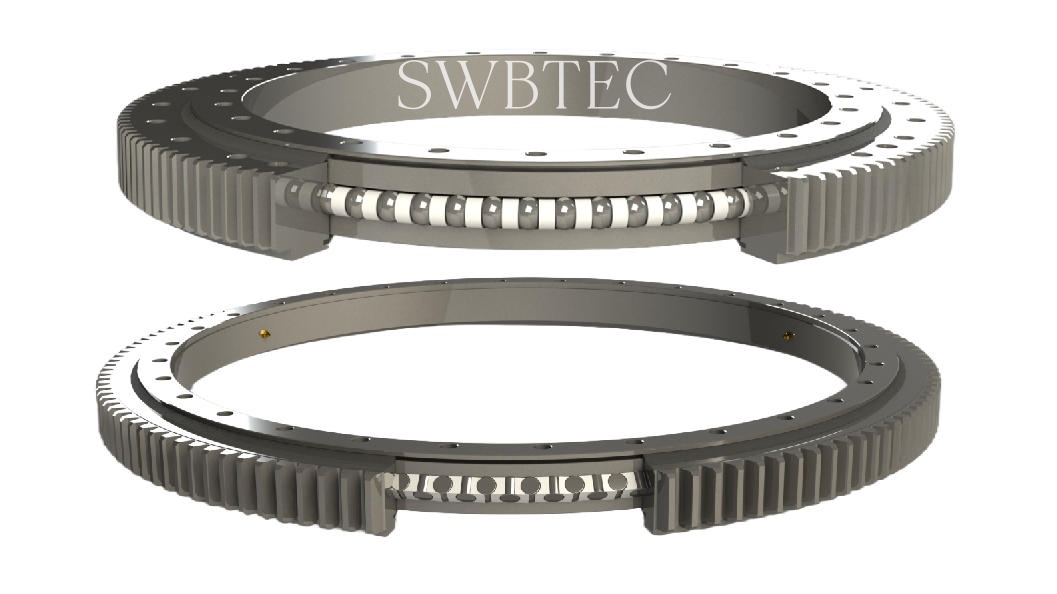How to Choose Between Four-Point Contact Ball type slewing bearing and Crossed Roller Slewing Bearings?
During slewing bearing selection, many customers often ask: For the same size, should I choose a four-point contact ball bearing design or a crossed roller design? As a technical expert at SWBTEC, I will explain the core differences between the two and provide selection guidelines.
1.Structural Differences:
Four-point contact ball slewing bearings utilize a single row of balls with specially designed raceways, enabling each ball to make contact at four points. Crossed-roller types employ a single row of cylindrical rollers arranged in a perpendicular, crisscross pattern.
2.Performance Comparison:
Load Capacity: Crossed-roller types offer higher dynamic load capacity for equivalent dimensions, particularly suited for resisting overturning moments.
Rigidity: Crossed-roller types exhibit superior rigidity with minimal deformation under high-torque loads.
Rotational Speed: Four-point contact ball types are better suited for high-speed applications, offering smoother operation.
3.Precision: Crossed-roller types provide higher rotational accuracy.
Installation Requirements: Four-point contact ball types have relatively lower demands on mounting bases.
Selection Recommendations
Choose four-point contact ball types slewing rings when your application requires: higher rotational speeds, smooth operation, moderate loads, or cost sensitivity.
Select cross-roller type slewing rings when your application requires: heavy loads, high rigidity, high precision, or significant overturning moments.
SWBTEC's engineering team can provide optimized slewing bearing solutions tailored to your specific operating conditions—such as load type, speed requirements, precision needs, and space constraints—ensuring the optimal balance between equipment performance and service life.


